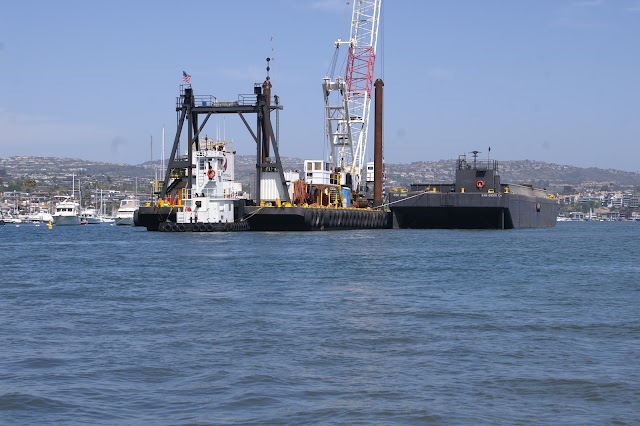By LEN BOSE
This month on the harbor has made me reflect on one of my favorite songs, “I’m Shakin” by Jack White. “A storm rocks a ship on a sea, the wind shakes the leaves on a tree, and I’m a nervous wreck and I’m all shook up, and that’s what you’re doin’ to me right now, that’s right, you got me nervous.”
The water is ebbing at the moment while I am encouraged by what the next flood tide will bring in. I am referring to the proposed utilization of space in our mooring fields, followed by an update regarding our lower bay dredging Confined Aquatic Disposal “CAD” project. I again would like to mention that I have many very good friends on both sides of these issues that I do hope will remain friends. Let’s move forward with my “marginal harbor advice when you are told you have no other opinions.”
Sara Hall’s article “State agency OKs city’s plan to bury contaminated dredged material in ‘Large hole’ in the harbor,” in the last edition of Stu News Newport, explains the CAD project better than I ever could in great detail. So, you might be asking yourself what happens next? With the Coastal Commission’s support, one of the last permits needed is with the Army Corps of Engineers. Assuming that permit is received, the Army Corps goes out to bid on the project.
My best guess is that we will see the dredging equipment arrive in the harbor sometime in February 2023. Many of my friends have voiced concerns about how much room the dredging equipment will take up. The simple answer is that the crane and scow are exactly what we have already experienced during phase one of the lower bay dredging.
While the dredging is going on, the anchorage will be moved up to the west end of Lido, in front of Lido Village. Different mooring fields will be removed while dredging is going on in that area or field. This will open up space in the busy five-point area of the harbor.
Speaking of mooring fields, this will segue me into the second part of my story. During this month’s Harbor Commission meeting, Harbor Commissioner Ira Beer presented the Mooring Field Open Water Initiative Improved Utilization Report, or how can we improve the moorings? I’ve been covering the Harbor Commission now for 12 years with this presentation ranking easily as one of the best reports I have ever witnessed. Commissioner Beer has dug into this task and has done his due diligence.
I spoke with Beer on the phone this week and during our conversation I recalled many of the issues I had when coming to and from my mooring. Beer knew exactly what I was talking about, while bringing up the same problems he has had retrieving and departing his mooring.
Back in 2018, the Harbor Commission, started with an objective to evaluate the current mooring fields and provide a recommendation for new guidelines that better define rows and fairways to improve navigation, safety, and optimization of space within the mooring fields and allow for additional city moorings to be located within the designated mooring fields.
The system that is being reviewed by the Harbor Commission is to go from a single-row mooring field to a double-row mooring field with the assistance of a Helical anchor, which resembles a corkscrew. This anchor system is much better than what we are using now, which is concrete blocks.
To get a better idea of what is being proposed refer to the post below where I have posted the complete 27-page PowerPoint presentation.
Many of my friends don’t care for this concept of a double row mooring system and came up with a large number of concerns regarding retrieving and departing their moorings. I am going to step out of the edge of the plank here and say, I like the idea of updating our mooring fields and reducing the overall footprint of the fields.
The Harbor Commission sub-committee will be meeting with the Newport Mooring Association to shape this proposed project before going in front of the Harbor Commission for approval of the recommendation at its next meeting in November, before going to the City Council.
The key part of this recommendation is to understand the testing process. A mooring field will be selected – let’s call it the C field. The first step is to take two rows or about six boats and then test the system to see if it works. Refer to the PowerPoint presentation to understand what all the different variables are in deciding if this system works.
The next step would be to change the remainder of that field with this new system and again if it works then ask City Council if they want to proceed. At each testing period, the Mooring Association and mooring permit holders will have an opportunity to present their comments. I say let’s give it a try and see if it works!
Sea ya.
~~~~~~~~
Len Bose is a yachting enthusiast, yacht broker and harbor columnist for Stu News Newport.


No comments:
Post a Comment